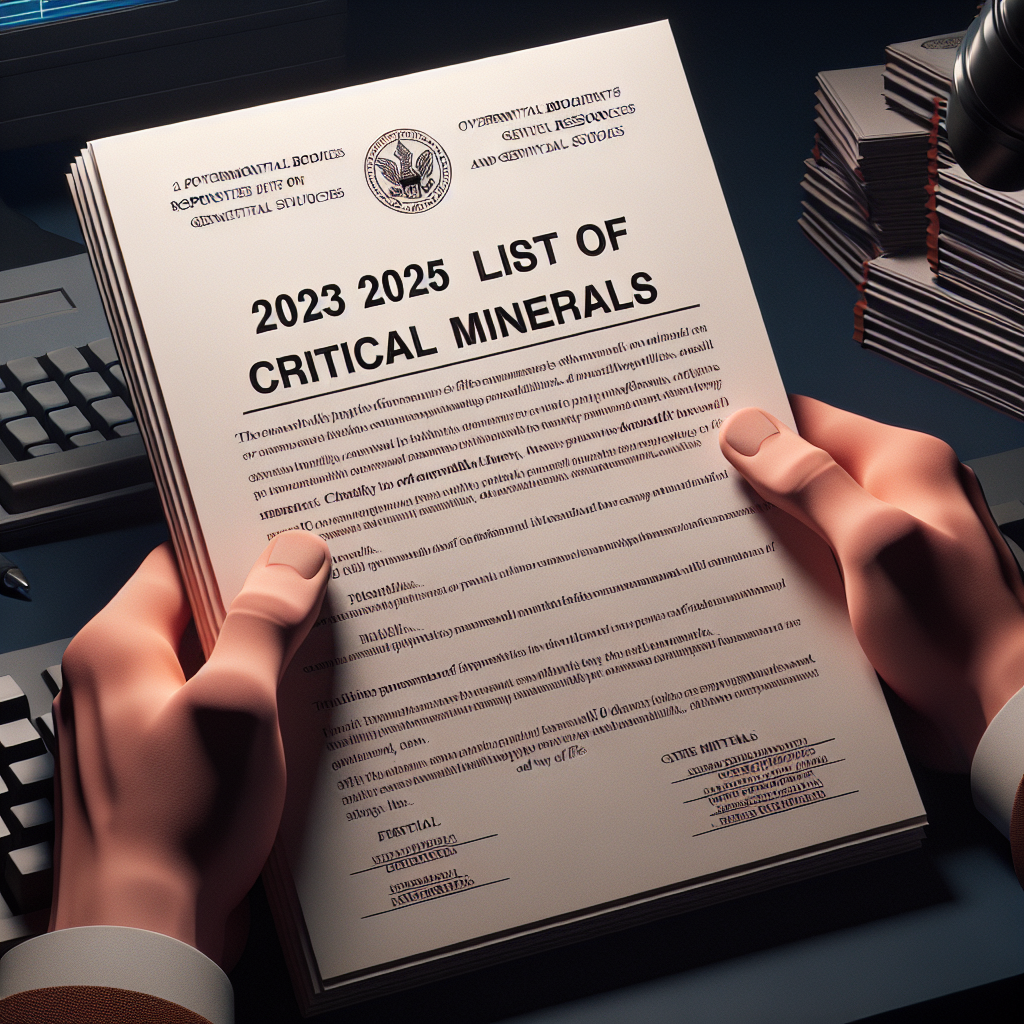On Thursday, November 6, the U.S. Department of the Interior and the U.S. Geological Survey (USGS) officially released the “2025 List of Critical Minerals,” which lists 60 minerals considered “crucially important to the U.S. economy, national security, and way of life.”
Interior Secretary Doug Burgum stated that this list is an important step in the Trump administration’s push for “American mineral independence.”
In a post on the social media platform X on Thursday, Burgum wrote, “Under President Trump’s leadership, we are restoring the independence of American minerals. The 2025 version of the list is a bold, data-driven blueprint aimed at reducing reliance on foreign adversaries and unleashing America’s innovation potential!”
He emphasized, “In 2024, the U.S. relied on imports for 80% of the rare earth elements used. This reliance is a risk we cannot afford. We are investing in domestic production and ensuring supply through trusted global partnerships!”
According to a report released by the USGS on the same day, the new list of critical minerals includes the 50 critical minerals and 15 rare earth elements from the 2022 list.
Burgum stated that the 60 critical minerals on the new list are widely used in smartphones, energy grids, defense systems, and advanced technologies, serving as key resources for maintaining America’s competitiveness and national security.
The additional 10 minerals include silver, copper, uranium, boron, potassium, phosphates, lead, rhenium, silicon, and coking coal.
Burgum mentioned that the USGS is mapping new mineral distributions and advancing materials science research to find environmentally and safety-friendly mining methods.
Earlier this year, Trump signed an executive order to promote the extraction and production of rare earth and critical minerals in the United States.
During a signing ceremony on March 20, Trump stated that the order would “significantly increase” America’s rare earth and critical mineral production.
“This is significant for the United States,” he said. “We are also signing agreements around the world for the extraction of rare earths, minerals, and many other minerals.”
The USGS stated that this new list was developed after evaluating 84 mineral commodities, over 400 industries, and more than 1,200 trade disruption scenarios.
“Each mineral commodity is classified based on its trade disruption risk,” USGS stated.
Control of critical minerals and rare earth markets by the Chinese Communist Party poses a strategic threat to the United States.
According to an analysis by German data collection and analysis platform Statista of USGS data, by 2024, China accounted for 99% of global gallium extraction or production, 95% of magnesium, 83% of tungsten, 79% of natural graphite, 69% of rare earths, and 60% of aluminum.
Beijing has frequently used this advantage as a diplomatic bargaining chip to exert pressure on other countries. For example, in a diplomatic dispute with Japan in 2010, Beijing imposed export controls on rare earths.
In April of this year, Beijing expanded its export control list. In October, Beijing announced comprehensive restriction measures, even covering foreign products containing trace amounts of Chinese rare earths. Trump criticized this move as hostile to the world. Subsequently, Beijing suspended these restrictive measures for a year.
Earlier this month, Trump announced that the United States would end its reliance on Chinese rare earth minerals within 18 months.
According to a statement from the Senate Foreign Relations Committee on July 30, a bipartisan bill was introduced by a group of senators in July this year to safeguard the U.S. critical mineral supply chain. The legislation authorizes the president to establish an international alliance to coordinate the extraction and processing of critical minerals.
Senator Jeanne Shaheen (D-New Hampshire), who supports the bill, stated, “This summer, China demonstrated the capability and willingness to deprive the world of critical mineral resources, which are crucial to our economic prosperity and military readiness.”
“The United States cannot address the challenges of the critical mineral supply chain alone. Instead, we must closely cooperate with allies and partners, and this bipartisan legislation supports these efforts,” she added.
The United States recently signed a $3 billion critical minerals cooperation agreement with Australia to counter China’s dominant position in the field.
On November 6, Trump met with the leaders of five Central Asian countries – Kazakhstan, Kyrgyzstan, Tajikistan, Turkmenistan, and Uzbekistan – at the White House and discussed key mineral cooperation issues with them.
Trump stated that he plans to strengthen America’s partnerships with these countries. “Critical minerals are one of the important items on our agenda. Over the past few weeks, my administration has expanded our critical mineral supply chain through agreements with allies and friends around the world, thus enhancing America’s economic security,” he said.
Tajik President Emomali Rahmon stated during the meeting that his country has abundant critical minerals, including antimony. “The United States is very interested in this,” he said.

